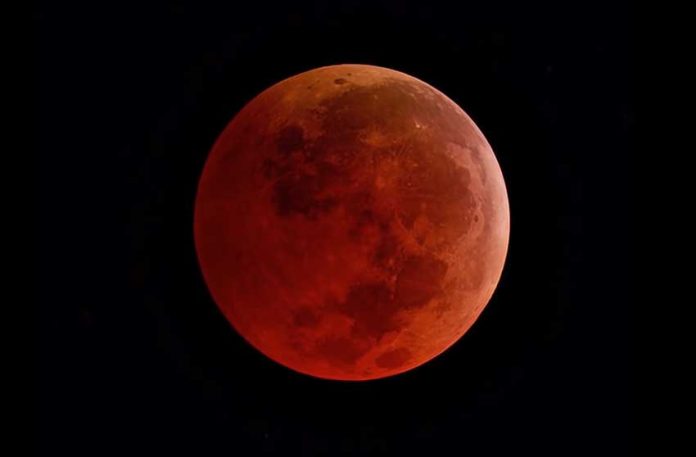It’s not just a total lunar eclipse that will occur Sunday night but a phenomenon called the Super Blood Wolf Moon.
The last total lunar eclipse for the next two and a half years will be fully visible from Mexico and will last for a few hours.
A supermoon is the term used when the moon appears bigger than usual. Sunday’s full moon will appear somewhat larger than average because it will be near perigee, the closest point to Earth in its elliptical orbit.
At its perigee, the moon can appear slightly larger — 14% — than when it is full near apogee, the farthest point from Earth in its orbit.
The term blood moon comes from the moon’s red hue during an eclipse while a wolf moon is a term popularized by the Farmers’ Almanacs published in the United States, which drew inspiration from indigenous cultures and European tradition to give every full moon a distinctive name.
The penumbral eclipse will begin tomorrow night at 8:37pm, Central Time, followed by the beginning of the partial, or umbral, eclipse at 10:41pm.
The maximum eclipse will occur at 11:12pm. The entire event will conclude at 1:48am, when the penumbral eclipse ends.
The umbra is the good part for the casual observer, as it will be quite obvious when the moon starts entering the umbra, the time when the partial eclipse begins.
No special protection or equipment is needed to view the eclipse, but the use of binoculars and telescopes can enhance the experience.
The Science Museum of the National Autonomous University (UNAM) will organize activities around the lunar eclipse starting tomorrow at 6:00pm.
The next partial lunar eclipse will take place on July 16 and will be visible from South America, Europe, Africa, Asia and Australia, but the next total lunar eclipse will not occur until May 26, 2021.
Source: Infobae (sp)
